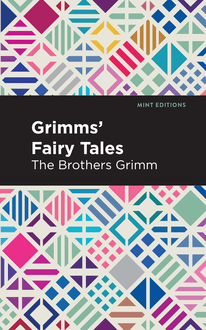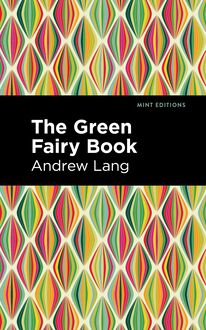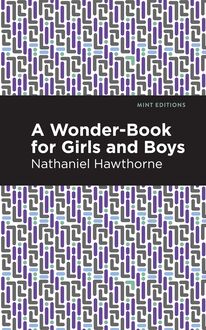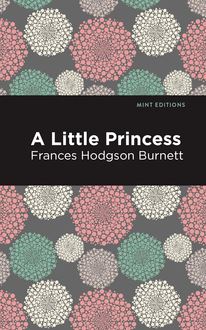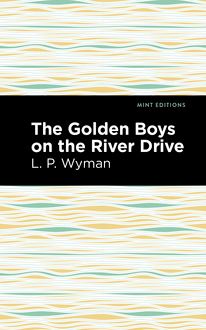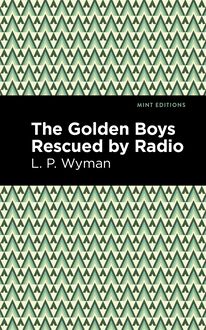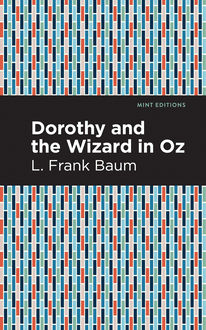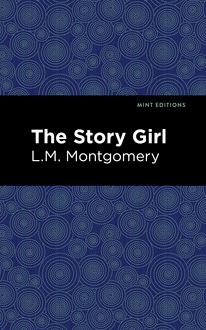-
 Univers
Univers
-
 Ebooks
Ebooks
-
 Livres audio
Livres audio
-
 Presse
Presse
-
 Podcasts
Podcasts
-
 BD
BD
-
 Documents
Documents
-
- Cours
- Révisions
- Ressources pédagogiques
- Sciences de l’éducation
- Manuels scolaires
- Langues
- Travaux de classe
- Annales de BEP
- Etudes supérieures
- Maternelle et primaire
- Fiches de lecture
- Orientation scolaire
- Méthodologie
- Corrigés de devoir
- Annales d’examens et concours
- Annales du bac
- Annales du brevet
- Rapports de stage
La lecture à portée de main
Vous pourrez modifier la taille du texte de cet ouvrage
Découvre YouScribe en t'inscrivant gratuitement
Je m'inscrisDécouvre YouScribe en t'inscrivant gratuitement
Je m'inscrisEn savoir plus
Vous pourrez modifier la taille du texte de cet ouvrage
En savoir plus

Description
Originally published in 1903, The Crimson Fairy Book is a vibrant collection of more than 30 diverse stories from prominent authors across the globe. This is one entry in Andrew Lang’s beloved fairy tale series.The Crimson Fairy Book provides another collection of classic stories for a new generation. It’s a vivid compilation of royalty, magical creatures, servants and giants. This edition also highlights a variety of stories from Europe and Asia. Notable titles include "The Death of Abu Nowas and of his Wife," "How the Beggar Boy turned into Count Piro," "The Gold-bearded Man" and "The Boy Who Could Keep a Secret." Lang delivers a phenomenal selection of stories that have become the English and American standard. The Crimson Fairy Book is a worthy addition to Andrew Lang’s impressive catalog. It’s a must-have for fans of classic fairy tales and oral traditions. Lang breathes new life into stories passed on from generation to generation. With an eye-catching new cover, and professionally typeset manuscript, this edition of The Crimson Fairy Book is both modern and readable.
Sujets
Informations
| Publié par | Mint Editions |
| Date de parution | 08 juin 2021 |
| Nombre de lectures | 0 |
| EAN13 | 9781513286662 |
| Langue | English |
| Poids de l'ouvrage | 2 Mo |
Informations légales : prix de location à la page 0,0500€. Cette information est donnée uniquement à titre indicatif conformément à la législation en vigueur.
Extrait
The Crimson Fairy Book
Andrew Lang
The Crimson Fairy Book was first published in 1903.
This edition published by Mint Editions 2021.
ISBN 9781513281643 | E-ISBN 9781513286662
Published by Mint Editions®
minteditionbooks.com
Publishing Director: Jennifer Newens
Design & Production: Rachel Lopez Metzger
Project Manager: Micaela Clark
Typesetting: Westchester Publishing Services
C ONTENTS P REFACE L OVELY I LONKA L UCKY L UCK T HE H AIRY M AN T O YOUR G OOD H EALTH ! T HE S TORY OF THE S EVEN S IMONS T HE L ANGUAGE OF B EASTS T HE B OY WHO COULD KEEP A S ECRET T HE P RINCE AND THE D RAGON L ITTLE W ILDROSE T IIDU THE P IPER P APERARELLOO T HE G IFTS OF THE M AGICIAN T HE S TRONG P RINCE T HE T REASURE S EEKER T HE C OTTAGER AND HIS C AT T HE P RINCE WHO WOULD SEEK I MMORTALITY T HE S TONE - CUTTER T HE G OLD - BEARDED M AN T RITILL , L ITILL , AND THE B IRDS T HE T HREE R OBES T HE S IX H UNGRY B EASTS H OW THE B EGGAR B OY TURNED INTO C OUNT P IRO T HE R OGUE AND THE H ERDSMAN E ISENKOPF T HE D EATH OF A BU N OWAS AND OF HIS W IFE M OTIRATIKA N IELS AND THE G IANTS S HEPHERD P AUL H OW THE WICKED T ANUKI WAS P UNISHED T HE C RAB AND THE M ONKEY T HE H ORSE G ULLFAXI AND THE S WORD G UNNFODER T HE S TORY OF THE S HAM P RINCE , OR THE A MBITIOUS T AILOR T HE C OLONY OF C ATS H OW TO FIND OUT A T RUE F RIEND C LEVER M ARIA T HE M AGIC K ETTLE
P REFACE
Each Fairy Book demands a preface from the Editor, and these introductions are inevitably both monotonous and unavailing. A sense of literary honesty compels the Editor to keep repeating that he is the Editor, and not the author of the Fairy Tales, just as a distinguished man of science is only the Editor, not the Author of Nature. Like nature, popular tales are too vast to be the creation of a single modern mind. The Editor’s business is to hunt for collections of these stories told by peasant or savage grandmothers in many climes, from New Caledonia to Zululand; from the frozen snows of the Polar regions to Greece, or Spain, or Italy, or far Lochaber. When the tales are found they are adapted to the needs of British children by various hands, the Editor doing little beyond guarding the interests of propriety, and toning down to mild reproofs the tortures inflicted on wicked stepmothers, and other naughty characters.
These explanations have frequently been offered already; but, as far as ladies and children are concerned, to no purpose. They still ask the Editor how he can invent so many stories—more than Shakespeare, Dumas, and Charles Dickens could have invented in a century. And the Editor still avers, in Prefaces, that he did not invent one of the stories; that nobody knows, as a rule, who invented them, or where, or when. It is only plain that, perhaps a hundred thousand years ago, some savage grandmother told a tale to a savage granddaughter; that the granddaughter told it in her turn; that various tellers made changes to suit their taste, adding or omitting features and incidents; that, as the world grew civilised, other alterations were made, and that, at last, Homer composed the “Odyssey,” and somebody else composed the Story of Jason and the Fleece of Gold, and the enchantress Medea, out of a set of wandering popular tales, which are still told among Samoyeds and Samoans, Hindoos and Japanese.
All this has been known to the wise and learned for centuries, and especially since the brothers Grimm wrote in the early years of the Nineteenth Century. But children remain unaware of the facts, and so do their dear mothers; whence the Editor infers that they do not read his prefaces, and are not members of the Folk Lore Society, or students of Herr Kohler and M. Cosquin, and M. Henri Guidoz and Professor Child, and Mr. Max Muller. Though these explanations are not attended to by the Editor’s customers, he makes them once more, for the relief of his conscience. Many tales in this book are translated, or adapted, from those told by mothers and nurses in Hungary; others are familiar to Russian nurseries; the Servians are responsible for some; a rather peculiarly fanciful set of stories are adapted from the Roumanians; others are from the Baltic shores; others from sunny Sicily; a few are from Finland, and Iceland, and Japan, and Tunis, and Portugal. No doubt many children will like to look out these places on the map, and study their mountains, rivers, soil, products, and fiscal policies, in the geography books. The peoples who tell the stories differ in colour; language, religion, and almost everything else; but they all love a nursery tale. The stories have mainly been adapted or translated by Mrs. Lang, a few by Miss Lang and Miss Blackley.
L OVELY I LONKA 1
There was once a king’s son who told his father that he wished to marry.
“No, no!” said the king; “you must not be in such a hurry. Wait till you have done some great deed. My father did not let me marry till I had won the golden sword you see me wear.”
The prince was much disappointed, but he never dreamed of disobeying his father, and he began to think with all his might what he could do. It was no use staying at home, so one day he wandered out into the world to try his luck, and as he walked along he came to a little hut in which he found an old woman crouching over the fire.
“Good evening, mother. I see you have lived long in this world; do you know anything about the three bulrushes?”
“Yes, indeed, I’ve lived long and been much about in the world, but I have never seen or heard anything of what you ask. Still, if you will wait till to-morrow I may be able to tell you something.”
Well, he waited till the morning, and quite early the old woman appeared and took out a little pipe and blew in it, and in a moment all the crows in the world were flying about her. Not one was missing. Then she asked if they knew anything about the three bulrushes, but not one of them did.
The prince went on his way, and a little further on he found another hut in which lived an old man. On being questioned the old man said he knew nothing, but begged the prince to stay overnight, and the next morning the old man called all the ravens together, but they too had nothing to tell.
The prince bade him farewell and set out. He wandered so far that he crossed seven kingdoms, and at last, one evening, he came to a little house in which was an old woman.
“Good evening, dear mother,” said he politely.
“Good evening to you, my dear son,” answered the old woman. “It is lucky for you that you spoke to me or you would have met with a horrible death. But may I ask where are you going?”
“I am seeking the three bulrushes. Do you know anything about them?”
“I don’t know anything myself, but wait till to-morrow. Perhaps I can tell you then.” So the next morning she blew on her pipe, and lo! and behold every magpie in the world flew up. That is to say, all the magpies except one who had broken a leg and a wing. The old woman sent after it at once, and when she questioned the magpies the crippled one was the only one who knew where the three bulrushes were.
Then the prince started off with the lame magpie. They went on and on till they reached a great stone wall, many, many feet high.
“Now, prince,” said the magpie, “the three bulrushes are behind that wall.”
The prince wasted no time. He set his horse at the wall and leaped over it. Then he looked about for the three bulrushes, pulled them up and set off with them on his way home. As he rode along one of the bulrushes happened to knock against something. It split open and, only think! out sprang a lovely girl, who said: “My heart’s love, you are mine and I am yours; do give me a glass of water.”
But how could the prince give it her when there was no water at hand? So the lovely maiden flew away. He split the second bulrush as an experiment and just the same thing happened.
How careful he was of the third bulrush! He waited till he came to a well, and there he split it open, and out sprang a maiden seven times lovelier than either of the others, and she too said: “My heart’s love, I am yours and you are mine; do give me a glass of water.”
This time the water was ready and the girl did not fly away, but she and the prince promised to love each other always. Then they set out for home.
They soon reached the prince’s country, and as he wished to bring his promised bride back in a fine coach he went on to the town to fetch one. In the field where the well was, the king’s swineherds and cowherds were feeding their droves, and the prince left Ilonka (for that was her name) in their care.
Unluckily the chief swineherd had an ugly old daughter, and whilst the prince was away he dressed her up in fine clothes, and threw Ilonka into the well.
The prince returned before long, bringing with him his father and mother and a great train of courtiers to escort Ilonka home. But how they all stared when they saw the swineherd’s ugly daughter! However, there was nothing for it but to take her home; and, two days later, the prince married her, and his father gave up the crown to him.
But he had no peace! He knew very well he had been cheated, though he could not think how. Once he desired to have some water brought him from the well into which Ilonka had been thrown. The coachman went for it and, in the bucket he pulled up, a pretty little duck was swimming. He looked wonderingly at it, and all of a sudden it disappeared and he found a dirty looking girl standing near him. The girl returned with him and managed to get a place as housemaid in the palace.
Of course she was very busy all day long, but whenever she had a little spare time she sat down to spin. Her distaff turned of itself and her spindle span by itself and the flax wound itself off; and however much she might use there was always plenty left.
When the queen—or, rather, the swineherd’s daughter—heard of this, she very much wished to have the distaff, but the girl flatly refused to give
-
 Univers
Univers
-
 Ebooks
Ebooks
-
 Livres audio
Livres audio
-
 Presse
Presse
-
 Podcasts
Podcasts
-
 BD
BD
-
 Documents
Documents
-
Jeunesse
-
Littérature
-
Ressources professionnelles
-
Santé et bien-être
-
Savoirs
-
Education
-
Loisirs et hobbies
-
Art, musique et cinéma
-
Actualité et débat de société
-
Jeunesse
-
Littérature
-
Ressources professionnelles
-
Santé et bien-être
-
Savoirs
-
Education
-
Loisirs et hobbies
-
Art, musique et cinéma
-
Actualité et débat de société
-
Actualités
-
Lifestyle
-
Presse jeunesse
-
Presse professionnelle
-
Pratique
-
Presse sportive
-
Presse internationale
-
Culture & Médias
-
Action et Aventures
-
Science-fiction et Fantasy
-
Société
-
Jeunesse
-
Littérature
-
Ressources professionnelles
-
Santé et bien-être
-
Savoirs
-
Education
-
Loisirs et hobbies
-
Art, musique et cinéma
-
Actualité et débat de société
- Cours
- Révisions
- Ressources pédagogiques
- Sciences de l’éducation
- Manuels scolaires
- Langues
- Travaux de classe
- Annales de BEP
- Etudes supérieures
- Maternelle et primaire
- Fiches de lecture
- Orientation scolaire
- Méthodologie
- Corrigés de devoir
- Annales d’examens et concours
- Annales du bac
- Annales du brevet
- Rapports de stage
